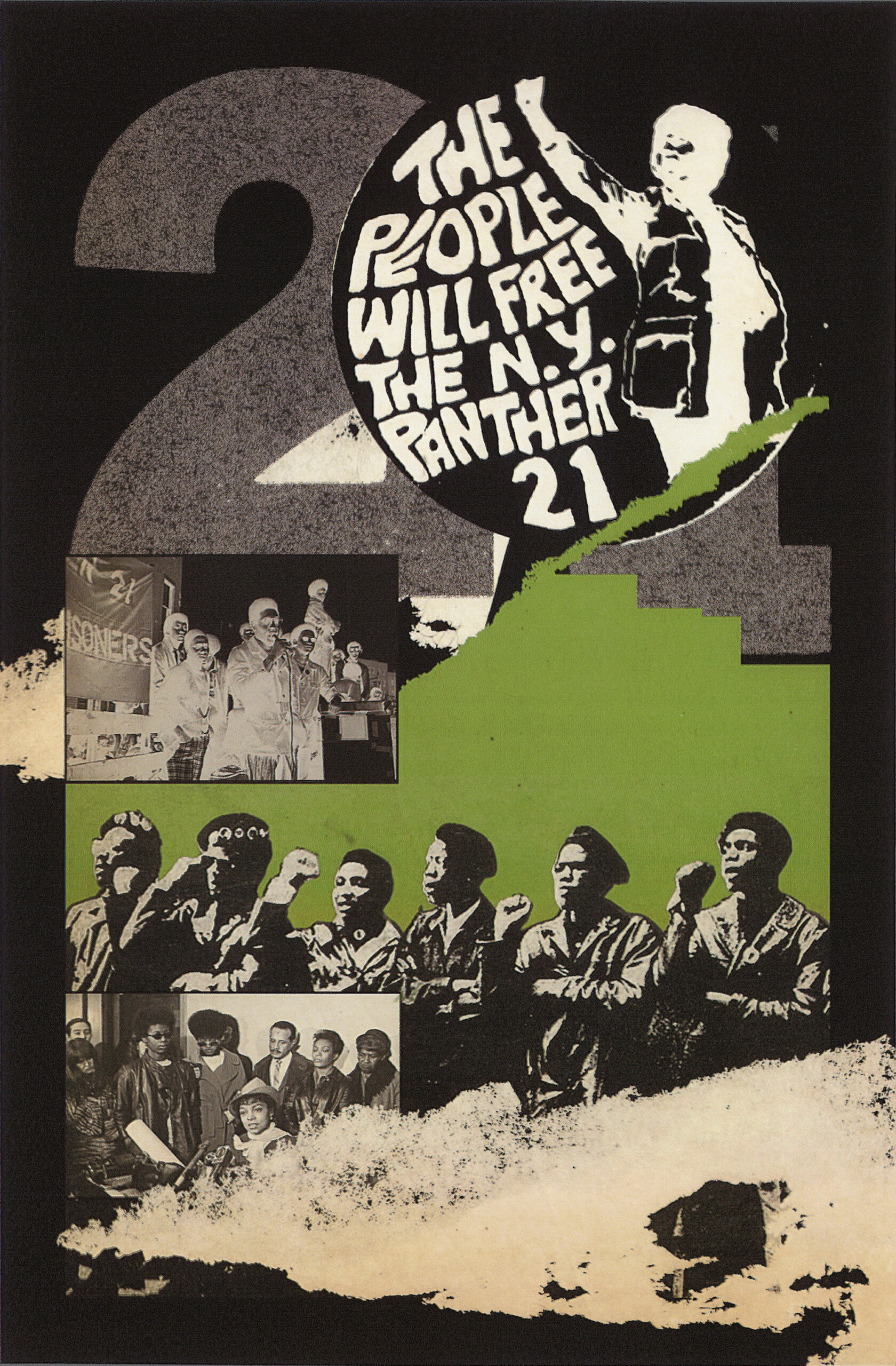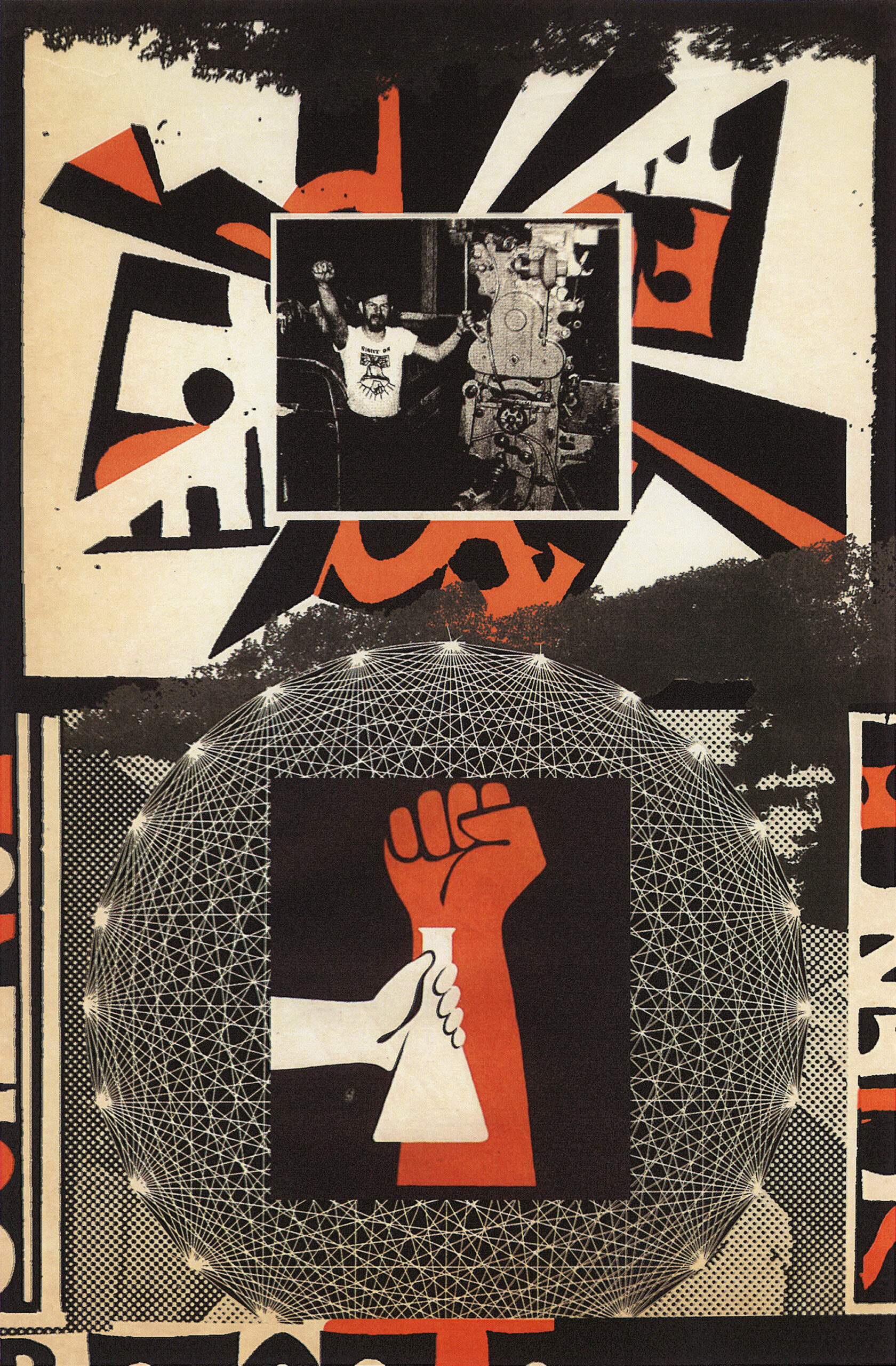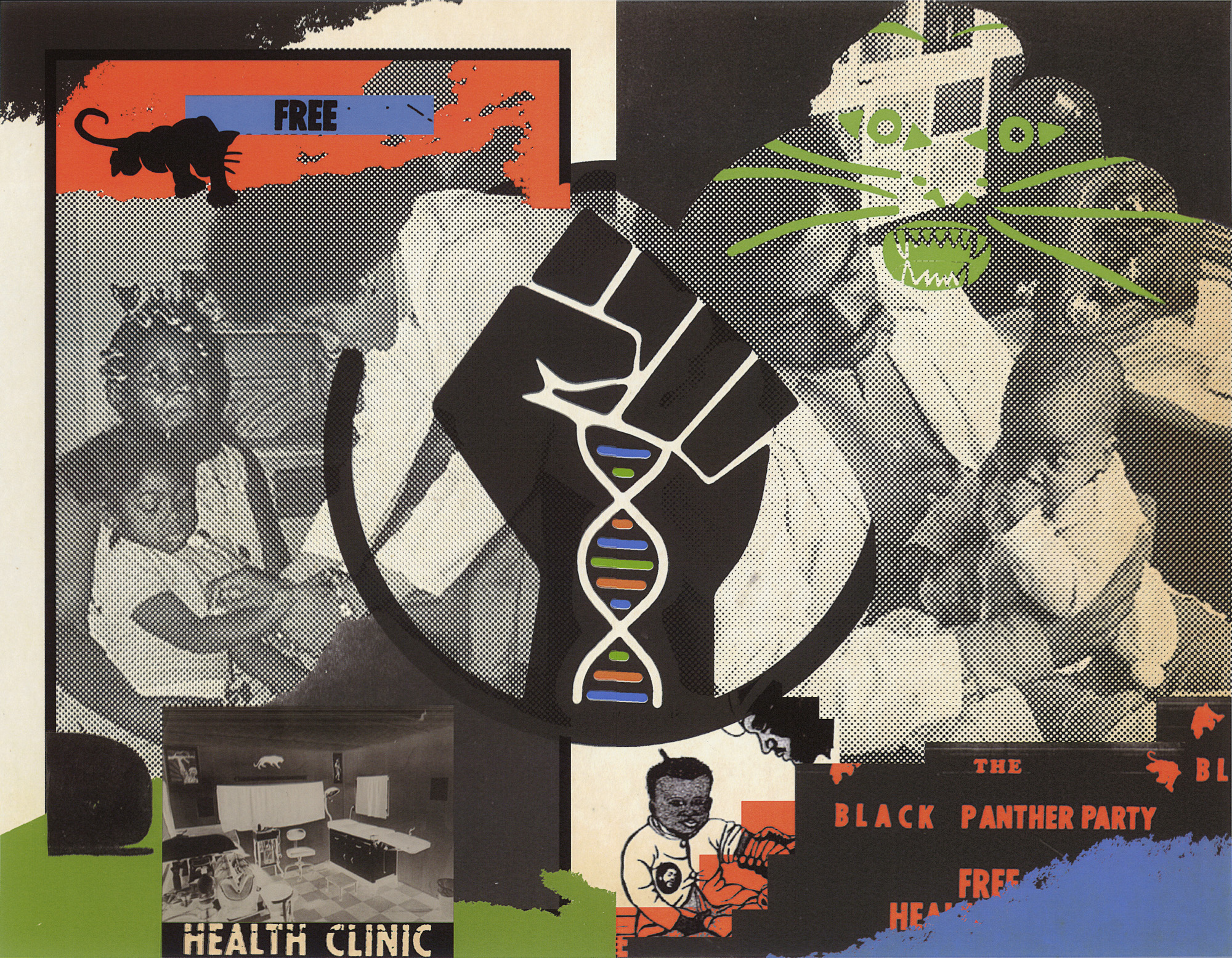In April 1970, a shy, soft-spoken young man took the stage at the annual Eli Lilly and Company evening banquet to collect a prestigious award recognizing the most promising work by an early-career microbiologist. The evening should have been a triumph for Jon Beckwith — a career-making moment recognizing his research on the cutting edge of what would become genetic engineering. Five months prior, Beckwith and his students had announced that they had purified a single group of genes, a bacterial regulatory cluster known as the “lac operon.” By incorporating the genes from E. coli into two different viral genomes and mixing the overlapping genetic material that resulted, they had devised a method for isolating single genes from their organismic contexts. In a word, they had invented cloning.
Yet as Beckwith delivered his acceptance speech, the celebratory mood of the black-tied crowd began to take a turn. Groans filled the banquet hall. Eventually someone shouted, “What have you done with our prize?” Beckwith’s faux pas? Mentioning the Black Panther Party — and being a vocal member of Science for the People.
There had been warning signs. In the week that their award-winning paper was published in Nature, Beckwith had taken the unusual step of calling a press conference. Described by the The New York Times as wearing “a dark beard, a Caesarstyle haircut, and flare-bottom trousers,” he mumbled and rushed anxiously through his prepared statement. Instead of celebrating his discovery, Beckwith worried that gene isolation could advance the development of bioweapons. Since 1962, the U.S. Department of Defense had been experimenting with releasing aerosolized bacteria and nerve agents in populated areas, including a “vulnerability test” using a harmless Bacillus strain in a major bus terminal. Beckwith told the assembled press that he found his own technical breakthrough “frightening — especially when we see work in biology used by our government in Vietnam and in devising chemical and biological weapons.”
Beckwith’s fellow scientists chastised the press conference: Some thought it was a self-promotional stunt that overstated the importance of his research. Others were disgusted with Beckwith for betraying the scientific community. But Beckwith didn’t let the disdain stop him.
Halfway through his acceptance speech, he pivoted from describing the technique with which he had isolated the lac operon gene to speaking frankly about how science has served American racism and militarism. “Since last November, when a group of us made a rather awkward attempt to issue a political statement surrounding our isolation of pure lac operon DNA, my concern about the misuse of science in this country has increased and my feeling of the necessity for scientists to take clear positions has increased….In a just society, those who received the awards should be those who are contributing in a meaningful way to the welfare of all people. In that light, I consider that the Black Panther Party is an organization which is so contributing.”
Beckwith had originally wanted to turn down the award, but ultimately opted to donate half of the prize money to the Boston Panther Free Health Movement and the other half to the Defense Fund for the Panther 21. This was personal to him.
By the time Beckwith had isolated the lac operon, the Chicago Police Department had murdered the young Black Panther leader Fred Hampton. His murder was a political assassination that reflected the growing effectiveness and militancy of the Black Power movement. The white establishment’s backlash was ruthless, resulting in police terror and Justice Department crackdowns. A year before Beckwith’s award speech, the New York Police Department had imprisoned the “Panther 21,” a group of Black Panther leaders who were awaiting trial on trumped-up charges of conspiracy to bomb multiple NYPD precincts and the Bronx Botanical Gardens. Among the Panthers awaiting trial was Beckwith’s old friend and colleague Curtis Powell.
They’d met in Paris in the fall of 1964 at a jazz club in Montparnasse. They were both 29, both loved jazz, and both had earned degrees in chemistry before pursuing doctoral work, in biochemistry and molecular biology, respectively. Beckwith had already earned his PhD and was working as a postdoctoral fellow at the Institut Pasteur; Powell was studying at the Université de Paris. Like many other Black American expatriates living in Paris at the time, Powell was moved by Malcolm X’s lecture that November at the Salle de la Mutualité and was infuriated when the French government (at the U.S. embassy’s urging) denied Malcolm reentry to Paris three months later in February 1965. Powell moved to Stockholm soon thereafter to complete his PhD, and then returned to United States to take up a research position in a lab at Columbia. Back in New York, he joined the Black Panthers.
By Beckwith’s 1970 speech, he and Powell had been out of touch, and Powell had been incarcerated on Rikers Island for over a year. Powell’s life and promising scientific career had been interrupted by his political activism. Learning of his friend’s incarceration, Beckwith began to seriously consider how he could square his own scientific work with his political ideas.

Armies of the Night
Beckwith was certainly not the only outspoken leftist scientist at the time, even on the arch-conservative Harvard campus. Across the country, hundreds of leftist professors were mobilizing to denounce U.S. militarism. A partial roster of antiwar faculty members in Cambridge, Massachusetts, alone includes intellectual luminaries like Noam Chomsky, Stephen Jay Gould, Howard Zinn, Salvador Luria, George Wald, Matt Meselson, and Hilary Putnam, not to mention those lower in the academic ranks. On March 4, 1969, thousands of graduate students and young, untenured faculty members at the Massachusetts Institute of Technology organized walkouts, teach-ins, and research stoppages in opposition to how the U.S. government militarized the fruits of their research. The 50 signatories of the faculty statement sponsoring the March 4 research stoppage named themselves the Union of Concerned Scientists, a nonprofit advocacy organization that to this day seeks to safeguard federal scientists’ free speech.
During the mass walkout and teach-in, students and faculty expressed their disillusionment with major scientific societies like the National Academy of Sciences, the American Physical Society, and the American Association for the Advancement of Science (AAAS). These institutions refused to denounce the ongoing Vietnam war, much less recognize scientists’ own complicity in securing American imperialism through the development of antiballistic missile systems, chemical defoliants like Agent Orange, and incendiary weapons such as napalm. Across the nation, scientists like Beckwith began to organize in earnest. In the crosshairs of this new movement was a prevailing liberal myth: science’s inherent neutrality.
Radical scientists claimed that the scientific establishment’s insistence that science is apolitical was just a cover for their deep complicity with the military-industrial complex. Seven months after the 1969 MIT strike, the largest American scientific society planned to meet in Boston. The annual meeting of AAAS brought together scientists across many disciplines, effectively functioning as the stronghold of prestigious, orthodox scientific scholarship. Wearing buttons emblazoned with the slogan “Science for the People” and shouting “Science is not neutral,” hundreds of Harvard and MIT graduate students and young faculty members interrupted the typically staid AAAS meetings, delivering papers on “The Sorry State of Science,” and lampooning the priorities of the U.S. scientific establishment in a year when federal money for technoscientific research was siphoned into Apollo 11 and Vietnam.
At stake for these radical scientists in 1969 was not only the fact that technoscience was bankrolled in service to an imperial state, but also the structures of race and gender inequality that persisted within scientific laboratories, universities, and other institutions. At the AAAS protests, a postdoctoral researcher in Beckwith’s lab named Rita Arditti helped organize an action to highlight the systematic exclusion of womenfrom the scientific community. Arditti led a phalanx of feminist scientists in interrupting a meeting of Sigma Delta Epsilon, a women’s scientific sorority. Arditti’s crew demanded that AAAS take steps to achieve gender equity in grad school admissions, establish free 24/7 childcare centers on university campuses, and provide student access to both birth control and abortion counseling. At the business meeting, another group interrupted the agenda to demand that AAAS call for military withdrawal from Vietnam, as well as agree to a resolution denouncing recent violence against the Black Panthers and “call[ing] on all scientists as individuals to deny the use of science and technology to enhance the effectiveness of federal, state, and local police in their war against blacks.” While none of these demands were met, the protesters succeeded in convincing their peers and elders to pass a resolution opposing the use of chemical defoliants in Vietnam.
In a pamphlet reporting on their actions at the Boston meeting, the group of radical scientists now calling themselves “Science for the People” clarified their aims, writing: “The scientist typically feels that science is morally or politically neutral and that his work, being an end in itself, should require no further justification to society.” But, they explained, science can never be neutral, because it “responds to the technological needs of the dominant social and economic class in a society. It serves those who control the development of technology and use it to further their own ends.” What was a socially conscious, antiwar scientist to do?
You can’t direct that your work will be used for the benefit of society. You are as much a part of the machinery as that computer you’re working on…Feel like quitting? Don’t quit, brother, there’s only one way to stop that frustration, to make yourself feel whole again. The only way to stop that sense of frustration is to fight against the system that uses you so poorly. If you want to redirect science, brother, you’ve got to redirect society… Don’t quit, brother! Organize!
The AAAS protests were a watershed for the radical science movement, launching networks and alliances that would instigate further protests and sit-ins throughout 1970. In a molecular biology symposium held annually at Cold Spring Harbor Laboratory, activists disrupted panels and lectures by screening a 16-minute newsreel of a prison interview with Bobby Seale, the Black Panther Party chairman. In December 1970, 250 Science for the People activists stormed the annual AAAS meeting. They were laying off their inhibitions. The Times reported that “young radicals shouted four-letter obscenities at speakers, and the angered wife of a respected biologist thrust her knitting needle into the arm of a noisy young protestor.” In their opening statement at the 1970 meeting, activists telegraphed their aims by quoting Black Panther Party co-founder Huey P. Newton: “The spirit of the people is greater than the man’s technology.”
Radical Science
While the slogan “Science Is Not Neutral” united myriad political issues — spanning anti-militarism, gender equity, antiracism, democratic socialism, environmentalism, and labor politics — it was clear that if it was going to work, the radical science movement was going to have to relate to national organizing efforts by the Black Power movement.
On first view, the connection between white educated scientists provoking their elder colleagues and the Black Power movement seems tenuous. Radicalism might endanger the careers of white leftist scientists, but never their lives. As the Charter Group for a Pledge of Conscience, a writing collective supporting the New York 21, put it in a 1970 pamphlet, “A Black radical summarized it when he said, ‘If a Yippie gets tired of it all, he can change his jeans, cut off his hair and go home. What can I take off and where would I go?’” Seen in another way, both movements congealed around a project of forcing the allegedly neutral institutions of civil society to reckon with how racism and violence were not merely side effects, but instead endemic features of American life. And both parties agreed that if you failed to act, you had already picked a side.
The radical scientists’ central claim was that doing politics was not ancillary to scientific work, but instead one of the core activities of a principled scientist. In this way, Science for the People and the Black Power movement asked the same question of science: “Who’s it for?”
As writer and academic Alondra Nelson has shown, the Black Panther Party’s focus on community health and well-being was not just an afterthought tacked on to its main political project; it was the very heart of the movement. Responding to rampant inequalities in medical care and medical discrimination, the Black Panther Party first mandated in 1968 that all its local chapters inaugurate health care initiatives that they called “Serve the People” programs. By 1970, establishing free medical clinics was obligatory for every single Black Panther Party chapter and was even enshrined in the Panthers’ Ten-Point Program two years later: The final point in the Black Panther Party’s platform demands “people’s community control of modern technology.” As Nelson puts it, “Health was a powerful and elastic political lexicon that could signify many ideals simultaneously…. [It] was a site where the stakes of injustice could be exposed and a prism through which struggles for equality could be refracted.”
Boston, the Bay Area, and Chicago had been early local chapters of the Science for the People movement, but by 1970 smaller collectives were organizing near college campuses all around the country. As Science for the People continued to grow in the early 1970s, its loosely affiliated local chapters needed a way to share news and orchestrate further initiatives. Boston scientists launched Science for the People Magazine to help coordinate this growing archipelago. Beyond the conviction that science was inherently political, the movement was ideologically heterodox. Different local chapters voiced political attachments ranging from anarchism to second-wave feminism to the Marxist-Leninist October League. At its peak in 1972, the magazine had a circulation of over 2,000 copies, and Science for the People counted 5,000 members on its rolls. In a year in which the total number of PhDs awarded in the United States was just over 33,000, these numbers were impressive. The cover of the magazine’s first issue had the same image that had been emblazoned on the buttons of the AAAS protesters: a hand gripping a chemist’s flask with a raised fist.
The magazine’s first issue excerpted letters mailed to Beckwith from jailed Panthers, including his friend from Paris, Curtis Powell, who responded to Beckwith’s Eli Lilly acceptance speech. Powell was encouraging, though not outright optimistic about the potential of Science for the People to effect real change. “Right On!” he wrote. “I am a scientist, I love my research, I am at home in a lab, but my people call, and I hear their call….I only wish that scientists in this country could understand and do something. It might help solve this dilemma, and if there were some more scientists willing to stop playing their passive role assigned to them…maybe together, your group and (others) can get something going.” Alongside Powell’s letter, the magazine printed a notice enjoining readers to follow the Black Panthers’ example. “Science for the People should also serve the people with a two-edged sword: Make our technology their servant for their needs; strike at the profit makers, militarists, home destroyers, and people manipulators.”
Most often radical scientists’ “active role” took the form of direct action and mutual aid. They found clever ways to redistribute healthcare and foster the well-being of marginalized and oppressed groups by focusing on inequities in how technology was distributed. Motivated by Powell’s suggestion, subsequent magazine issues coordinated further action in this spirit, which members named the “Technical Assistance Program.” TAP scientists partnered with the Young Lords, a Puerto Rican revolutionary socialist group, to provide East Harlem residents with inexpensive lead test kits, part of the Young Lords’ project to redefine developmental delays and tuberculosis as social diseases of oppression. New York Science for the People members also assisted the Young Lords in hijacking an X-ray truck from the New York City Health Department; the Washington, D.C., chapter joined with local Panther members to distribute medical supplies needed for sickle-cell testing; and in Chicago, Science for the People regularly raised money for jailed Panthers’ bail and legal representation. They also helped install electrical generators in community medical clinics and free health centers, requisitioned dental equipment for community use, and assisted the Chicago Panthers at least once in breaking into the city electrical grid to redirect free power to medical clinics and schools in underserved neighborhoods.
Throughout, members of the jailed Panther 21 continued their correspondence with Science for the People. In August 1970, letters couriered via their attorneys arrived at Boston headquarters from Kwando Kinshasa and Ali Bey Hassan, who requested assistance establishing a “free science” program. Boston-area molecular biologists took on this task, partnering with local schools to build antiracist biology curricula, training middle and high school teachers in the social implications of genetics, consulting with South End neighborhood schools as they developed new course materials, and teaching an introduction to biology course for Boston University freshmen.
The TAP soon expanded to serve the needs of scientists and colonized peoples abroad, particularly in areas that Science for the People identified as targets of American imperialism and oppression. Mathematics textbooks were shipped to Cuba during the embargo via a math professor living in Canada, and molecular biology and biochemistry books were routed to Vietnam. Small delegations of scientists travelled to China, Cuba, North Vietnam, and Nicaragua. On these trips, they would give molecular biology lectures at local universities, meet with fellow scientists, organize teacher exchange and placement programs, and tour laboratories and factories. This kind of scientific internationalism was a radical example of bottom-up solidarity in the face of American nationalism, militarism, and capitalism.
Radical scientists’ battle was not only over technoscience as a handmaiden of the imperial state, but also over science as an ideological terrain, particularly when scientific language was used to naturalize social inequality. The signature move of this mode of conservative science is to treat historically contingent human behaviors and qualities (such as intelligence or aggression) as grounded in biology — particularly genetics. The ideological substitution of biological for social explanations of inequality undergirded the emergence of entire subfields of the life sciences, such as sociobiology in the 1970s and 1980s (with notable examples including work by E. O. Wilson and Richard Dawkins), and in more recent years, the sort of evolutionary psychology espoused by Steven Pinker.
Science for the People found itself fighting back against revivals of eugenic thinking, including ideas that unemployment was heritable, or that riots were the result of an inborn predisposition to violence. When Harvard professors Arthur Jensen (in 1969) and Richard Herrnstein (in 1971) published racist claims that intelligence was both heritable and racially variable, Science for the People enjoined its readers to “struggle every day in every class, seminar, at the workplace, at scientific meetings, in the pages of the journals, against the pervasive ideology. If [we] do not critically analyze [our] own practice, the conventions of science, etc. [we] will end up as mindless radicals mouthing phrases of struggle while perpetuating the very structure that must be destroyed.”
These ideological battles impacted the criminal justice system and the medical establishment alike. In 1973, Beckwith learned that a Boston hospital was screening newborn boys for so-called “XYY Syndrome,” the disproven notion that an additional Y chromosome confers an increased likelihood of aggressive, antisocial, or violent behavior. Beckwith and other members of Science for the People formed a “Genetic Engineering Group” that researched the background of the practice. They mounted a media blitz that within a year had effectively halted the study.
Despite its array of visionary initiatives for organizing within science, Science for the People collapsed under the weight of competing agendas and ideologies in the latter half of the 1970s. The movement would not prove quite influential enough to decouple science from the military-industrial complex, nor did its critique of technoscientific capitalism stick. In the 1980s, neoliberalism’s stranglehold on science only tightened, and life sciences research — from biotechnology to pharmaceuticals to genomics — was commercialized to the hilt. Yet, one of the lasting impacts of the radical science movement is the success of its members: Many of the scientists politicized during their time in Science for the People brought its lessons to bear on distinguished careers in research, thereby inoculating their respective disciplines with potent ways of thinking about the relationship of biology to society.

A Legacy Worth Emulating
Today, we live in a world in which technoscience continues to be governed by profit margins. Universities are now glorified technology transfer offices, federal scientists are routinely silenced if data contradict private interests, pharma CEOs reap billions of dollars from a global pandemic, while billionaire “bad boys” launched themselves into space. It seems little has changed in the past 50 years.
What, then, can biologists do at a moment when the United States is engaged in an unpopular and protracted war, when the floor has fallen out of the scientific and academic job markets, when federal and local governments conspire with police to brutalize, disenfranchise, and surveil Black activist movements? The answers in 1971 and 2021 are not the same. However, the former could serve as a “usable past” to inform contemporary politics of biology, particularly about how biologists might begin to counter inequality and prioritize social equity.
The early alliance of radical molecular biologists with the Black Panther Party shows us that an important first step in redistributing technoscientific power equitably is recognizing that doing science is always political, whether those politics are made explicit or not. Science for the People lucidly demonstrated how science is embedded in capitalism, imperialism, and white supremacy. Such conditions, they showed, can both exasperate material inequities and shape scientific ideologies in ways that naturalize and reproduce the status quo. Motivated by the theoretical and political insights forged in the Black Power movement, they channeled their scientific activities into work they hoped would further oppressed people’s well-being and be reparative — to practice a “science for the people.”
To begin working toward an anti-colonial, antiracist, antiwar science requires learning the history of how biologists have countered such forces in the past. It also means amplifying the radical scientists of today who are thinking deeply about what a more equitable science could look like. Theoretical cosmologist Chanda Prescod-Weinstein enjoins fellow scientists to always ask of new research, “Why now?” For example, “What meaning does a mission to Mars have for making Black Lives Matter? For protecting Indigenous women and girls from kidnapping and murder? Will it keep our water safe? The promise of technological advancement that will improve lives is tantalizing — but then what of Ferguson?” Molecular biologists, synthetic biologists, and other biotech workers wield technical power over the mechanisms of life. We must ask ourselves what interests that power is serving.



